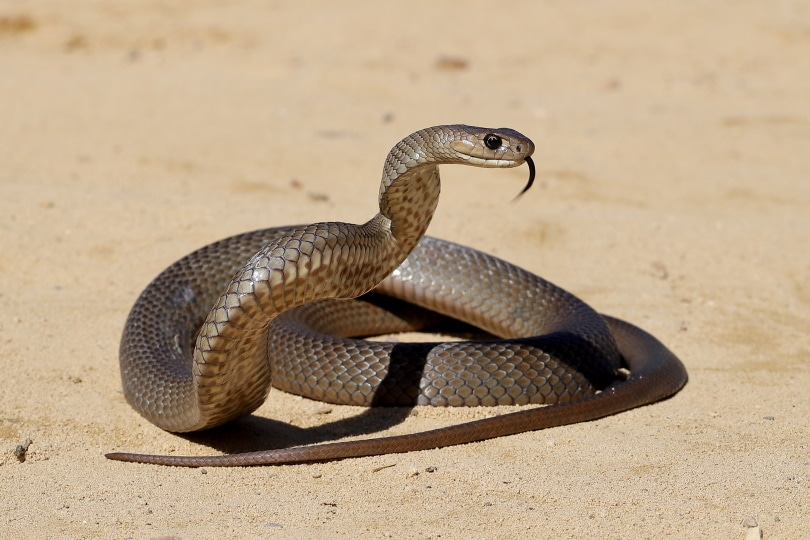
[ad_1]

Although snakes don’t hear the same way other animals do, they often use sound to communicate. Most people associate hissing with snakes, but they can produce several other sounds. However, snakes are unable to purr.
In this article, we’ll discuss why snakes can’t purr and describe some other sounds snakes can make, including a few unusual ones that might surprise you! We’ll also cover different methods snakes use to communicate or scare off predators.
How Snakes Make Noise (and Why They Can’t Purr)
While scientists don’t know exactly how cats purr, it is believed to involve the movement of muscles around the kitty’s vocal cords. Most snakes don’t have vocal cords, making it hard for them to produce any sound with varying pitch.
Many snake vocalizations involve air movement, but not with the degree of control that animals with vocal cords can produce. Snakes often rely on muscle movement to make sounds as well.
Other Snake Sounds and How They Make Them
Hissing

The most familiar snake noises are probably hissing and the rattling of a rattlesnake’s tail.
Hissing is produced when the snake forcefully blows air out of its mouth and nose. Depending on the snake’s size, the hiss may sound more like a whistle.
Rattling

The end of a rattlesnake’s tail contains multiple loose layers of keratin, the same substance that makes up human fingernails. The snake shakes its tail fiercely when threatened, causing an ominous rattling noise. While rattlesnakes are best known for this behavior, some other species, like copperheads, will shake their tails to scare off enemies.
The rattle of one species, the Eastern Massasauga, sounds more like the buzzing of a bee. Some snakes make a rasping noise by rubbing their scales together, which serves the same purpose as a rattle.
Popping
Popping is the polite term for this sound that some snakes make. The Sonoran coral snake and the western hook-nose snake attempt to scare off predators by forcefully blowing air out a vent near their tail. Essentially, they use flatulence as a defense mechanism.
Growling
Some large snakes, most notably the king cobra, can growl like wild cats. King cobras are already one of the most intimidating snakes due to their size, venom, and signature hood. Growling makes them even scarier!
Shrieking
As we mentioned earlier, most snakes don’t have vocal cords, which limits the sounds they’re able to make. However, one species that has something similar is the pine snake. The snakes can produce a loud shriek or bellow to scare away predators.
A few species create a defense call even without vocal cords, which is quite difficult.
Other Ways Snakes Communicate

As we learned, snakes use vocalizations primarily for defense and to scare away predators. Besides noises, they use some other methods for protection.
Non-venomous snakes may try to fool predators into thinking they are a venomous species by puffing out air sacs on the side of their faces. This gives their typically slender heads a triangular shape similar to venomous snakes.
Like an opossum, some snakes play dead when they feel threatened. If a snake fails to intimidate a predator away with noise, it may go into final defense mode by curling up in a ball and tucking its head inside for protection.
Conclusion
Snakes may not purr, but they do have a lot to say! Most of their sounds are intended to frighten potential predators, including humans who may cross their paths in nature. If you’re hiking or playing outdoors in an area with known snake populations, stay alert for the shy reptiles. Should you encounter a snake hissing, rattling, or performing other vocalizations, take the hint and move away, especially if it’s a venomous species.
Featured Image Credit: Tom Reichner, Shutterstock
[ad_2]
Source link



